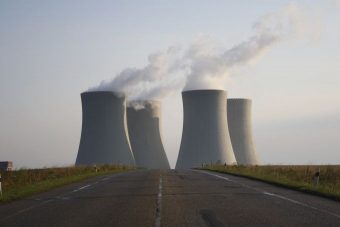
Unexpectedly high growth in the renewable energy market, in terms of investment, new capacity and high growth rates in developing countries have contributed to a change in the energy landscape, the latest World Energy Resources report released by the World Energy Council (WEC) yesterday shows. However, it says nuclear energy “is increasingly seen as a means to add large scale baseload power generation while limiting the amount of greenhouse gas emissions”.
The publication, updated every three years, “comprises a comprehensive and unique set of global energy resources data and related information,” according to WEC. “This information allows energy decision-makers to better understand the reality of the energy sector and the resource developments.”
The 24th edition of World Energy Resources – launched during the World Energy Congress in Istanbul, Turkey – covers 12 energy resources, together with carbon capture and storage (CCS) and energy storage.
The report shows total global renewable energy generating capacity has doubled over the past decade, from 1037 GWe in 2006 to 1985 GWe by the end of 2015. Over this period, wind energy capacity increased from 74 GWe to 432 GWe, while solar capacity rose from 6 GWe to 227 GWe. Hydropower capacity, meanwhile, grew from 893 GWe to 1209 GWe. Together, renewable resources now account for 23% of global power generation of 24,098 TWh.
In the chapter on nuclear energy – compiled with the assistance of the World Nuclear Association – the report notes that at the end of December 2015 global nuclear generating capacity stood at 390 GWe, representing about 11% of the world’s electricity.
In a press conference to launch the new report, World Nuclear Association director general Agneta Rising said: “2015 was a very good year for nuclear energy because it doubled the capacity put online. This is compared with the last 25 years. So in 2015 there were 10 GWe of new nuclear capacity put online and it had been below five and even zero during the previous 25 years.”
“The development of nuclear power is today concentrated in a relatively small group of countries,” the report says. China, South Korea, India and Russia accounted for 40 of the 65 reactors under construction at the end of last year.
Rising added, “There is also nuclear power construction in other parts of the world. In the USA there are four reactor constructions, Europe five, the United Arab Emirates four, and we have also have reactors under construction in Pakistan, Argentina, Brazil, Ukraine and Belarus too. There are also countries with one reactor under construction. But we also see countries that are starting projects or continuing projects that have been suspended. Turkey is one of those examples that are choosing to introduce nuclear generation.”
It says, “The outlook for nuclear up to 2035 will depend largely on the success of the industry in constructing plants to agreed budgets and with predictable construction periods. It is evident in a number of countries that median construction times are stable.”
Beyond 2035, the report expects fast reactors to make “an increasing contribution in a number of countries by building on the experience of operating these reactors in Russia and with developing the Generation IV prototypes, such as the Astrid reactor being designed in France.”
The WEC report says global uranium production increased by 40% between 2004 and 2013, mainly because of increased production by Kazakhstan, the world’s leading producer. In an assessment of global uranium resources, WEC says total identified resources have grown by about 70% over the last ten years. As of January 2015, the total identified resources of uranium “are considered sufficient for over 100 years’ of supply based on current requirements”.
Source: world-nuclear-news.org

